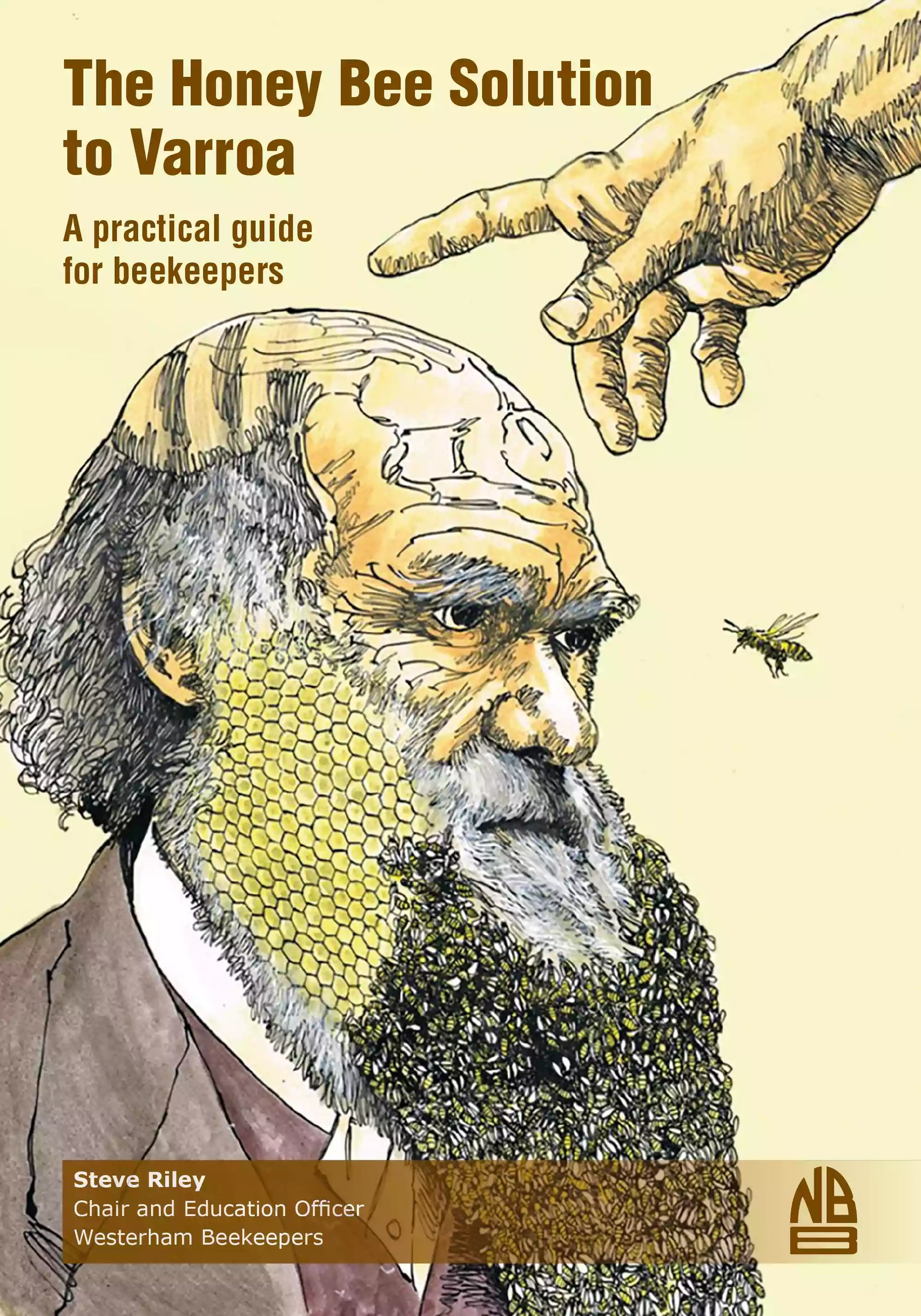The Honey Bee Solution to Varroa, Riley

The Honey Bee Solution to Varroa
"This remarkable book presents a practical, chemical-treatment-free, solution to the Varroa problem. The author explains that in colonies that are surviving without treatments, the workers are controlling Varroa not by killing the adult mites, but by detecting and chewing out mite-infested brood cells to interrupt the mites' reproduction. This book is a first-rate guide on how to identify mite-resistant colonies using simple tools: open-mesh screens and insert boards. The beekeeper learns thereby which of his/her colonies have genes that should be propagated in a program of treatment-free beekeeping."
Tom Seeley – Author of The Lives of Bees
The Honey Bee Solution to Varroa explains the practical steps beekeepers can take to identify and select for easily observable Varroa-resistant traits in their colonies. The science behind the bees’ mechanisms for controlling their mite populations is explained, in what is a bee-led solution to the biggest challenge facing the European honey bee.
Steve Riley is the current Chair and Education Offi cer at Westerham Beekeepers, a club in the south-east of England. He is a member of the “Path to Varroa-resistance in the UK” team that launched the education and science website www.varroaresistant.uk in April 2023. He presents on “Identifying Varroa-resistance Traits” to beekeeping associations around the UK, including sessions and seminars at the BBKA Spring Convention and National Honey Show.
VIEW Contents
- Introduction
- Emergence of Varroa-resistance
- Varroa and Viruses; why They Overwhelm Colonies
- How Varroa-resistant Colonies Manage Their Mite Populations
- Why Selecting for Varroa-resistant Traits is Important
- Westerham Beekeepers’ Monitoring of Varroa-resistance Traits
- Other Approaches to Monitoring
- Seasonality of Honey Bees’ Hygienic Behaviour Against Varroa
- Contributory Colony Health Factors
- Selection Process and Spreading Varroa-resistance
- Drones: a Pivot for Varroa-resistant Traits
- Sustainable Apiary for Varroa-resistant Bees
- Honey Yields and Colony Survival
- Lessons Learned
- Getting Started / Transitioning from Treated Colonies
- Acknowledgements
- References and Further Reading
- Appendix
- Short-term Biotechnical Stepping-stone
VIEW Book Review
Reviewed by Ann Chilcott (Scottish Expert Beemaster) and author of THE BEELISTENER
The Honey Bee Solution to Varroa: A Practical Guide for Beekeepers is about how we can work with our honey bees to deploy their natural traits to resist Varroa destructor (varroa). This will enable us, over a few years, to stop using chemical or biotechnical treatments and keep healthy productive colonies. Steve Riley is an experienced beekeeper who is currently Chair and Education Officer for Westerham Beekeeper’s Association in the south-east of England. He speaks widely around the UK on how to identify key traits of resistance to varroa and achieve the ultimate goal.
Riley and his colleagues have worked under guidance from, and in close collaboration with, some of the leading scientists in this field. Emeritus Professor Stephen Martin has written the foreword to this book. Riley charts their six-year journey from researching and experimenting, to fine tuning management strategies to achieve success and varroa-resistant bees. We benefit from their mistakes and learn lessons from these pioneers.
There are 15 short chapters laid out under helpful headings. Included is an extensive reference section and recommended reading list, and a useful appendix that charts a stepping-stone approach toward achieving the goal of varroa-resistance. The photographs and diagrams are clear and explanatory, especially the picture of chewed-out pupae on the bottom board, which are a key feature in the selection of resistant bees. The pictures enhance the text and teach us how to find out which colonies are uncapping and recapping brood, which is another strategic feature to note in the process.
Simple monitoring of varroa using open mesh floors (OMF) and bottom boards is advised because we want to study more than just mites. “When you insert a varroa board under an OMF, you have a research lab generating a wealth of information.”
This book is well written and the instructions and explanations are clear, concise, and easy to understand. It will be popular with beekeepers because one of its key features is the simplicity of the methods used for attaining varroa resistance, and the ease of replication making this goal achievable for the newest beekeeper.
We learn the history of treatment-free beekeeping and how South African beekeepers have never treated for varroa. Colonies were lost after varroa arrived in South Africa, but in 5-8 years the colonies that survived built up and developed a resistance that enabled them to flourish. We discover that several groups of UK beekeepers have been working together for some years already to successfully achieve this goal.
One of the key things about solving livestock problems is to fully understand the biology of the animals involved. Riley does an excellent job of explaining the life history of varroa and how varroa resistant colonies manage them. Did you know that a foundress varroa mite can live up to one year? And, did you know that the dispersal phase in the varroa life cycle is what we used to call the phoretic phase? Riley’s book is up to date which makes it so useful for beekeepers studying for modular exams.
I agree with the author that, “mainstream beekeeping does not currently teach about selection for varroa-resistance. As a result, the honey bee and varroa relationship is moving further out of balance. By using miticides, beekeepers are unwittingly removing the natural selection pressure on their honey bees to deal with the mites. The result is a cycle of breeding from bees which are susceptible to varroa.”
The Honey Bee Solution to Varroa is a timely publication when the world is seeking better ways to live sustainably and be less reliant on chemicals to solve problems. Every beekeeper needs to be aware of what is going on with modern varroa management, even if they do not plan to follow the advice shared in this ideal guide book.
Unavailable